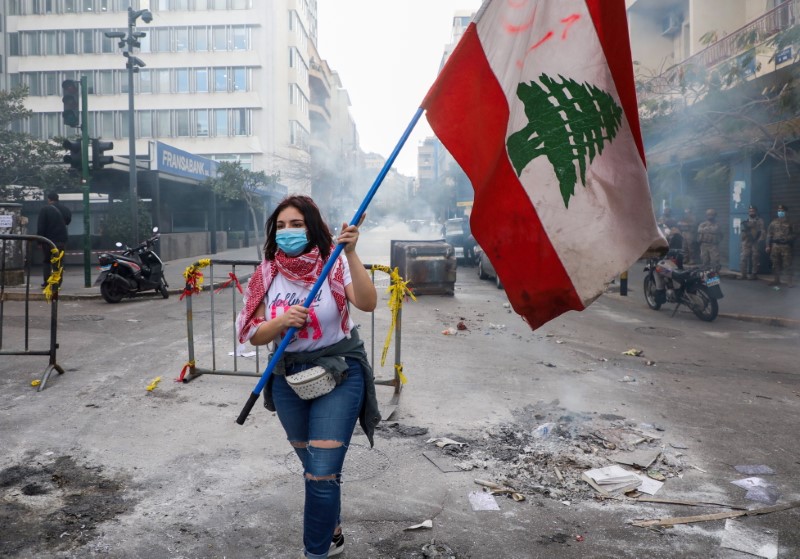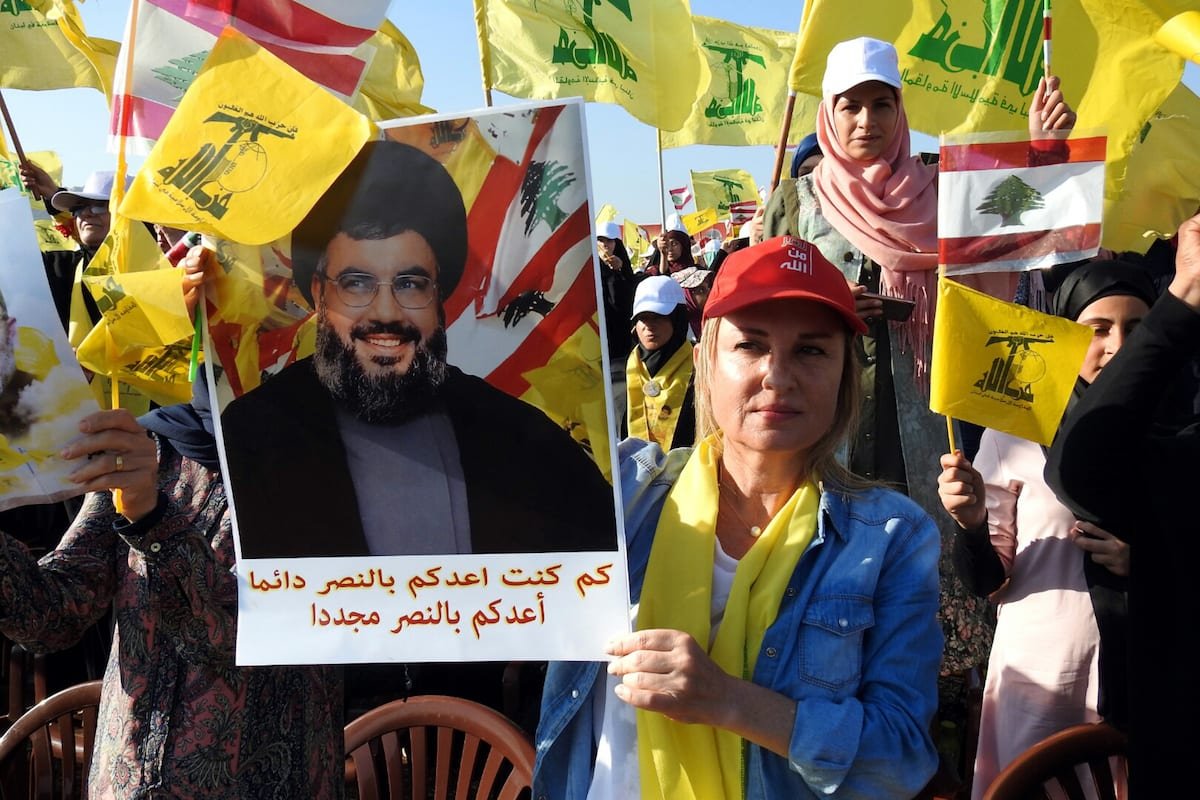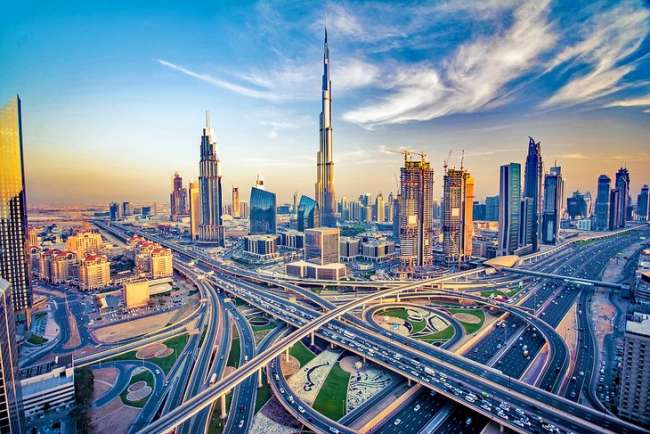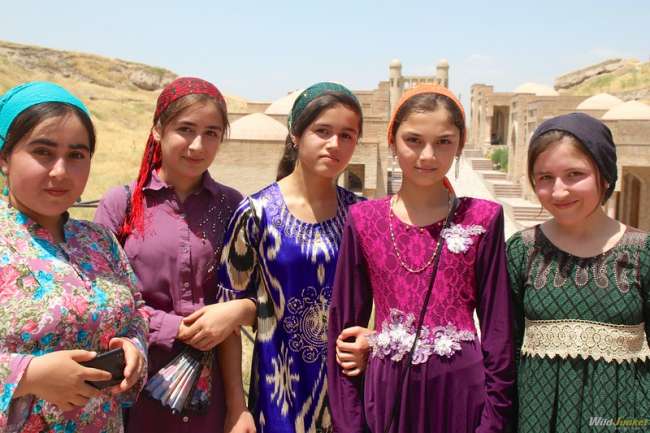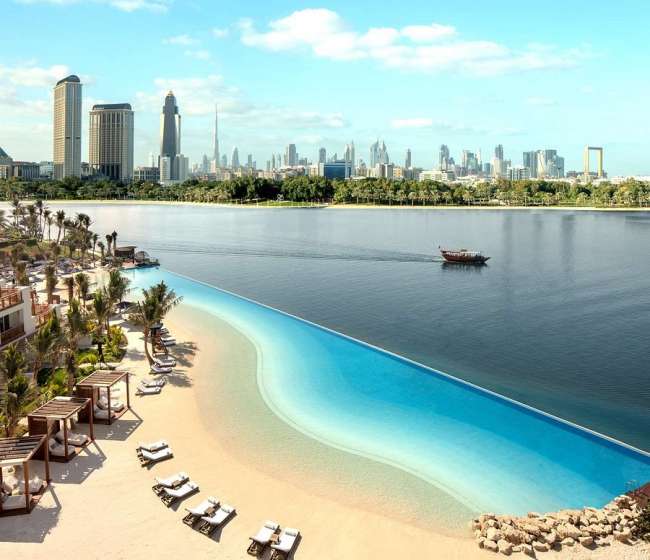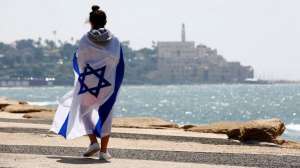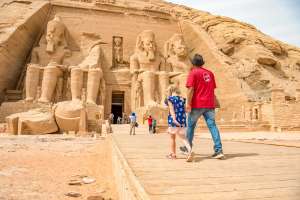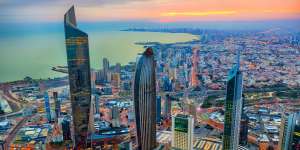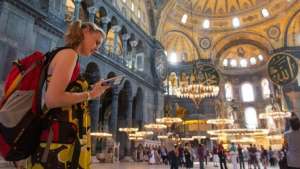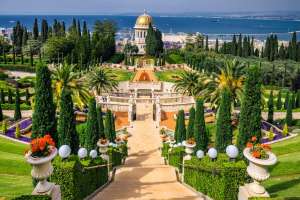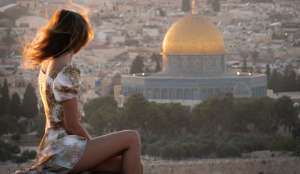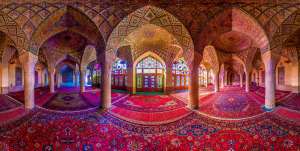The earliest signs of civilization in what is now Lebanon reach back over seven thousand years, placing it among the world’s oldest continuously inhabited regions. Long before modern borders were drawn, this stretch of Mediterranean coastline was home to the Canaanites—later known as the Phoenicians—an ancient maritime people whose cities such as Tyre, Sidon, and Byblos became thriving hubs of trade and culture. These seafaring pioneers built sturdy cedar ships and established trade routes that linked them to Egypt, Greece, and the far western Mediterranean. Their alphabet, carved on stone and etched on clay, would later inspire the Greek and Latin writing systems.
In 64 BC, Lebanon fell under the control of the Roman Empire, becoming part of the province of Syria. During this time, cities like Baalbek (then known as Heliopolis) flourished, adorned with grand temples and intricate architecture that still stand as magnificent ruins today. Christianity soon spread through the region, and Mount Lebanon became one of the early bastions of the faith. It was here that the Maronite Church took root, preserving its unique traditions and identity even as empires rose and fell around it.
When Arab Muslim armies arrived in the 7th century, the region’s political and cultural fabric changed dramatically. Yet the Maronites managed to preserve their Christian faith and distinct mountain society. Around the same time, a new religious group, the Druze, emerged in the rugged terrain of Mount Lebanon. Their esoteric beliefs and strong communal identity would shape the region’s complex religious landscape, often resulting in centuries of uneasy coexistence and occasional conflict between the area’s sects.
The rule of the Ottoman Empire began in 1516 and lasted for over four centuries, marking a long era of shifting autonomy and imperial control. Under Ottoman administration, Mount Lebanon enjoyed a semi-independent status through various emirs and local rulers who managed to balance between the interests of Istanbul and the mountain communities. The 19th century, however, brought intense sectarian violence—particularly between Druze and Christian groups—that culminated in the tragic massacre of around 10,000 Christians in 1860. This event prompted European intervention and led to the reorganization of Mount Lebanon as the Mutasarrifate, an autonomous district governed by a non-Lebanese Christian official under Ottoman oversight.

After World War I and the fall of the Ottoman Empire in 1918, the territories that make up modern Lebanon came under the French Mandate. The French expanded the borders of Mount Lebanon to include surrounding Muslim areas, creating what became known as Greater Lebanon in 1920. This move sowed the seeds for Lebanon’s unique demographic mix and set the foundation for its modern political system.
By 1943, Lebanese leaders negotiated independence and established a political arrangement known as confessionalism, a delicate power-sharing formula that distributed government roles among religious groups. While designed to maintain balance, this system would also later contribute to political friction. French troops finally left Lebanese soil by December 31, 1946, and the new nation began its independent journey.
In the decades that followed, Lebanon flourished culturally and economically, earning the nickname “the Switzerland of the Middle East.” Its bustling capital, Beirut, became a financial hub and a beacon of Arab intellectual life, filled with publishing houses, theaters, and universities. From the 1950s to the early 1970s, the country experienced a period of relative peace and prosperity. Yet beneath this surface, religious and political tensions simmered quietly, waiting to erupt.
When the Lebanese Civil War broke out in 1975, it brought fifteen years of devastation, claiming over 150,000 lives and displacing countless others. The conflict fractured the country’s once vibrant society and turned Beirut into a divided city. When the war finally ended in 1990, Lebanon faced the daunting task of rebuilding both its infrastructure and its sense of national unity. Post-war reconstruction projects—most notably led by Prime Minister Rafik Hariri—transformed parts of Beirut, though deep political divisions remained.
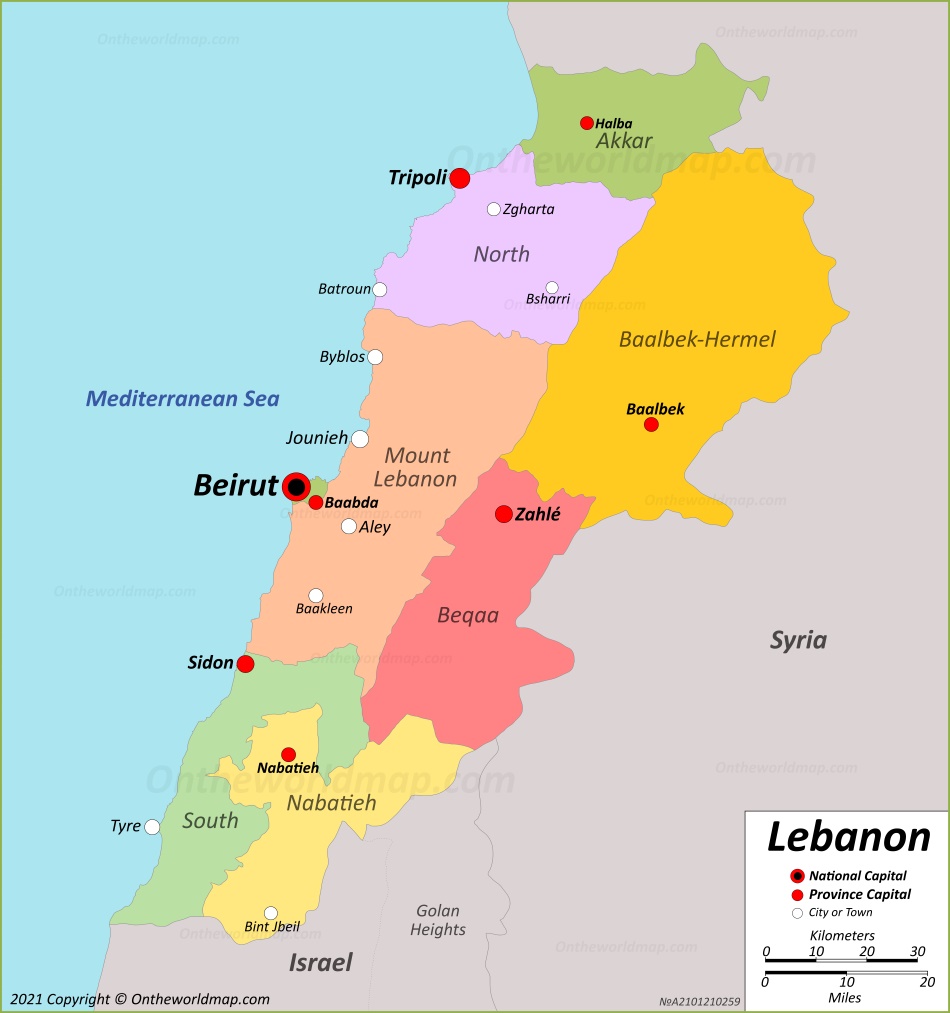
Key Historical Highlights of Lebanon
1516 – The Mount Lebanon Emirate is formed, an autonomous region within the Ottoman Empire, allowing local leaders limited self-rule.
1861 – The Emirate transitions into the Mount Lebanon Mutasarrifate, which later lays the groundwork for the Lebanese Republic.
1860 – Sectarian clashes erupt; about 10,000 Christians are killed by Druze fighters in violent communal strife.
1865 – The Ottoman authorities take direct control of the region, curbing Mount Lebanon’s autonomy.
1920 – Following World War I, the Mutasarrifate and its surrounding areas are merged into Greater Lebanon under the French Mandate. Roughly 100,000 people in Beirut and Mount Lebanon perish from starvation during the wartime blockade.
1926 – France proclaims the formation of the Lebanese Republic, setting up a new constitution.
1941 – Lebanon attains de facto independence under Free French administration.
1943 – General elections result in a new government that abolishes the French mandate, solidifying full sovereignty.
1948 – During the Arab-Israeli War, Lebanon supports neighboring Arab states. Around 100,000 Palestinian refugees flee into Lebanon, changing its demographic composition.
1960–1982 – The Palestine Liberation Organization (PLO) establishes bases in Lebanon, escalating conflict along the southern border with Israel.
1975 – A full-scale civil war begins, lasting until 1990 and leading to immense human and material losses.
1990 – The war concludes after sixteen long years. Approximately 150,000 people are killed, and another 200,000 are injured.
2016 – The Lebanese government estimates hosting around 1.5 million Syrian refugees, making Lebanon one of the countries with the highest refugee population per capita in the world.
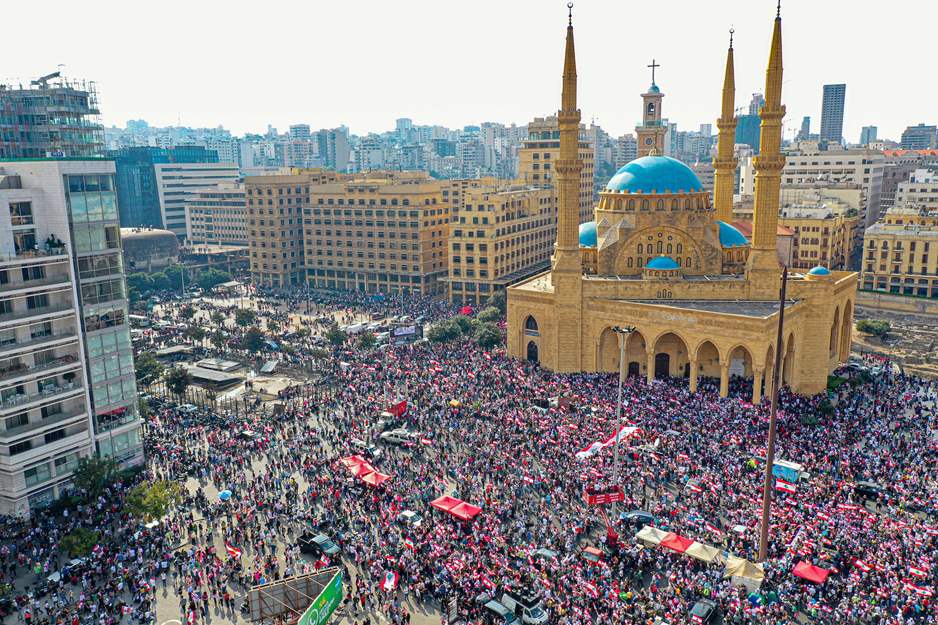
About Lebanon
Area: 10,400 square kilometers — slightly larger than the U.S. state of Connecticut, yet packed with dramatic landscapes ranging from snowy mountains to sunlit Mediterranean shores.
Population: Approximately 5.26 million people (as of July 2021), though exact numbers fluctuate due to waves of migration and the presence of refugees.
Median Age: Around 33.7 years, reflecting a relatively young population with strong ties to both tradition and global modernity.
Capital: Beirut — the pulsating heart of Lebanon, known for its blend of old-world charm and cosmopolitan energy, where Ottoman-era buildings stand beside contemporary high-rises and seaside cafés.
Ethnic Composition: About 95% Arab, 4% Armenian, and 1% other ethnic minorities, including Kurds, Assyrians, and smaller communities with deep historical roots.
Religious Diversity: Muslims make up roughly 61% of the population (split between Sunni and Shia), Christians account for about 34%, and the Druze community represents just over 5%. This intricate mosaic of faiths is both Lebanon’s cultural strength and, at times, its political challenge.
1918 – Following the Ottoman Empire’s collapse, France assumes control over the region encompassing modern-day Lebanon.
November 22, 1943 – Lebanon formally declares its independence, establishing itself as a sovereign republic.
1948–1975 – The establishment of Israel in 1948 leads to an influx of Palestinian refugees into Lebanon. Tensions rise as armed clashes between Palestinian fighters and Israeli forces frequently spill across the border, occasionally drawing in the Lebanese army and fueling unrest.
July–October 1958 – Civil turmoil prompts U.S. forces to intervene briefly to stabilize the situation.
1975 – Civil war erupts, dividing the country along sectarian and political lines.
1976 – At the Lebanese government’s request, Syria sends the so-called Arab Deterrent Force to help quell the fighting, further entangling regional powers in Lebanon’s conflict.
March 1978 – Israel invades southern Lebanon, targeting PLO strongholds. Although the United Nations protests and Israel withdraws, it maintains a self-declared “security zone” near the border, managed by the Army of South Lebanon.
June 1982 – Israel launches a massive invasion of Lebanon aimed at dismantling the PLO’s military presence.
August 1982 – Christian leader Bashir Gemayel is elected president but assassinated shortly thereafter. His brother Amin Gemayel assumes office in September.
September 15–18, 1982 – Hundreds of Palestinian civilians are massacred in the Sabra and Shatila refugee camps in Beirut. Although the killings are carried out by Lebanese militias, Israel faces international condemnation for allowing the events to occur under its occupation.
April 18, 1983 – A devastating bombing strikes the U.S. Embassy in Beirut, killing 63 people.
October 23, 1983 – Coordinated suicide attacks target U.S. and French barracks, killing 241 American Marines and 40 French paratroopers, shocking the world and reshaping Western involvement in Lebanon.
February 1984 – Lebanon’s army suffers major defections among Muslim and Druze soldiers, nearly collapsing the national military structure.
February 26, 1984 – The U.S. begins withdrawing troops, marking the end of its peacekeeping mission.
1988 – President Amin Gemayel’s term ends without a successor. He appoints General Michel Aoun, a Christian army commander, as interim prime minister. At the same time, sitting prime minister Salim al-Hoss, a Muslim, remains in office. The state splits into rival administrations, reflecting the country’s deep sectarian and political rifts.
1989 – Members of parliament convene in Saudi Arabia and negotiate the Taif Agreement, a political blueprint to end the civil war and rebalance power among Lebanon’s religious communities.
November 1989 – René Moawad is elected president but is assassinated days later. Elias Hrawi becomes president, appoints Salim Hoss as prime minister, and removes Aoun from his military post—moves that gradually consolidate a single central government.
1991 – Lebanon’s militias are officially dissolved, with the notable exception of Hezbollah. The decision aims to rebuild a unified national army and restore state authority after fifteen years of conflict.
1991 – Lebanese representatives join the Madrid peace talks, entering a broader regional effort to negotiate with Israel alongside Arab neighbors.
1998 – Army commander Émile Lahoud assumes the presidency, signaling another turn in the country’s post-war political realignments.
May 2000 – Israel withdraws from southern Lebanon after years of occupation, reshaping the security dynamic along the border and altering internal debates about resistance and state sovereignty.
February 14, 2005 – Former prime minister Rafik Hariri is assassinated by a car bomb in Beirut, killing 21 others. The blast jolts Lebanese politics and triggers waves of public demonstrations.
April 26, 2005 – Syrian forces depart Lebanon after nearly three decades, following international pressure and sustained domestic protests.
images/20170813_2_25228300_24920499.jpg
July–August 2006 – Hezbollah captures two Israeli soldiers—Ehud “Udi” Goldwasser and Eldad Regev—near the border. Israel responds with a large-scale air campaign and ground incursion.
Death toll (estimates vary):
– Lebanese: approximately 850–1,190 dead; about 4,409 wounded.
– Israeli: approximately 44 civilians and 119 soldiers killed; more than 1,000 wounded.
November 21, 2006 – Industry minister Pierre Gemayel, son of former president Amin Gemayel, is shot dead in Beirut, further heightening political tensions.
June 13, 2007 – Anti-Syrian parliamentarian Walid Eido and nine others are killed by a car bomb. Eido had supported the UN probe into Hariri’s assassination.
November 24, 2007 – As his term ends, President Lahoud declares a state of emergency and hands security responsibilities to the army. Prime Minister Fouad Siniora serves until parliament elects a new president.
May 6, 2008 – The government announces plans to dismantle Hezbollah’s private telecommunications network, calling it a threat to national security.
May 8, 2008 – Hezbollah’s leader, Hassan Nasrallah, declares the move a “declaration of open war.” Street battles erupt in Beirut between Hezbollah-aligned forces and government supporters.
May 25, 2008 – Parliament elects army chief Michel Sleiman as president, a compromise aimed at stabilizing institutions.
June 7, 2009 – Parliamentary elections are held. The “March 14” coalition wins 71 seats; the “March 8” alliance led by Hezbollah secures 57.
June 27, 2009 – Saad Hariri is designated prime minister, tasked with forming a government.
November 9, 2009 – After months of negotiation, Hariri announces a national-unity cabinet including members of his bloc and Hezbollah.
January 12, 2011 – Eleven Hezbollah-aligned ministers resign, bringing down Hariri’s coalition government amid disputes tied to the Special Tribunal for Lebanon.
January 17, 2011 – The UN-backed tribunal files indictments related to Rafik Hariri’s killing. Details are initially withheld to avoid sparking violence.
January 25, 2011 – President Michel Sleiman names Najib Mikati prime minister.
March 2011–present – As Syria’s civil war escalates, hundreds of thousands of refugees seek safety in Lebanon, straining public services and the economy.
June 13, 2011 – Mikati forms a new government, with a platform focused on stability amid regional upheaval.
July 8, 2011 – The tribunal issues arrest warrants for suspects in the Hariri assassination case.
July 29, 2011 – Authorities publicly name four suspects: Salim Jamil Ayyash, Hassan Habib Merhi, Hussein Hassan Oneissi, and Assad Hassan Sabra.

November 29–30, 2011 – Rockets are fired from Lebanon into Israel for the first time in over two years; Israel shells launch areas in response. No casualties are reported.
December 9–11, 2011 – A roadside bomb injures five French UN peacekeepers and a Lebanese civilian. A subsequent rocket launched toward Israel falls short, injuring a Lebanese woman.
October 19, 2012 – Brigadier General Wissam al-Hassan, head of the Internal Security Forces Intelligence Branch and a prominent critic of Syria’s government, is killed by a car bomb in Beirut.
March 22, 2013 – Prime Minister Najib Mikati resigns amid disputes over election oversight and security appointments.
April 6, 2013 – Tammam Salam is tapped to form a new government.
February 15, 2014 – Salam announces a cabinet after extended bargaining among rival blocs.
August 22–23, 2015 – Public anger over government paralysis boils over as uncollected garbage piles up in Beirut. Demonstrations escalate into clashes; the Red Cross reports around 400 injuries.
August 30, 2015 – Army units deploy across parts of Beirut to stabilize the streets as trash-crisis protests continue.
November 12, 2015 – Twin suicide bombings in southern Beirut kill at least 43 people. A surviving would-be bomber tells investigators he is an ISIS recruit who entered from Syria two days earlier.
June 27, 2016 – A series of suicide attacks strikes a mainly Christian town in northern Lebanon near the Syrian border, killing six and wounding 19.
October 31, 2016 – Parliament elects Michel Aoun president with Hezbollah’s backing, ending a long presidential vacuum.
November 3, 2016 – Aoun designates Saad Hariri as prime minister, returning him to a post he previously held from 2009 to 2011.
August 16, 2017 – Parliament repeals a law allowing rapists to escape punishment by marrying their victims, a landmark reform applauded by rights groups.
August 27, 2017 – A cease-fire arrangement with ISIS facilitates the departure of hundreds of fighters from the Lebanon-Syria border area and yields information about nine missing Lebanese soldiers.
November 4, 2017 – While in Saudi Arabia, Hariri announces his resignation, citing fears of assassination and accusing Iran and Hezbollah of regional interference.
November 21, 2017 – Hariri agrees to suspend his resignation to allow for consultations on the political crisis.
December 5, 2017 – Hariri rescinds the resignation after cabinet factions, including Hezbollah, pledge to steer clear of regional conflicts.
December 13, 2017 – The United States announces a military aid package to Lebanon valued at more than $120 million, reinforcing the army’s capabilities.
May 6, 2018 – Lebanon holds its first parliamentary elections in nine years. Turnout is below 50%, reflecting political fatigue and economic anxieties.
May 24, 2018 – President Aoun names Hariri prime minister for a third term after he wins support from 111 out of 128 lawmakers.
January 31, 2019 – After months of delays, a new government is unveiled with Hariri at the helm.
September 16, 2019 – The tribunal announces fresh charges against Salim Ayyash for a series of deadly attacks on politicians in 2004–2005, expanding the accountability track beyond the Hariri case.

October 17, 2019 – Nationwide demonstrations erupt after proposed austerity measures, including a tax on WhatsApp calls. The government retreats from the tax plan, but protests broaden to encompass corruption and economic collapse.
October 21, 2019 – Hariri unveils economic reforms and salary cuts for officials in an effort to calm the streets, while acknowledging that protesters will judge the steps on their own terms.
October 29, 2019 – Hariri announces his resignation amid sustained protests and political deadlock.
October 30, 2019 – President Aoun asks Hariri to stay on in a caretaker capacity. Aoun promises reforms and vows a cleaner government.
January 21, 2020 – A new cabinet forms with Hassan Diab as prime minister, backed by Hezbollah, allied parties, and the Free Patriotic Movement.
August 4, 2020 – A colossal blast at Beirut’s port devastates entire districts, kills more than 170 people, and injures thousands. The disaster is traced to improperly stored ammonium nitrate.
August 10, 2020 – Prime Minister Diab and his government resign in the aftermath of the explosion and the public outcry that follows.
October 22, 2020 – Hariri is named prime minister-designate, tasked with forming another government during a deepening financial crisis.
July 15, 2021 – Hariri steps down after failing to agree on a cabinet lineup with President Aoun, leaving Lebanon to navigate crisis conditions with a caretaker administration.
September 10, 2021 – Najib Mikati forms a 24-member cabinet, ending a 13-month governmental vacuum following the Beirut-port explosion. His administration later becomes a caretaker government as political negotiations stall.
May 15, 2022 – Parliamentary elections are held with roughly 49% turnout. Traditional parties lose several seats while independent reformist candidates make significant gains, yet no coalition achieves a clear majority, prolonging political instability.
April 7, 2022 – Lebanon reaches a preliminary agreement with the International Monetary Fund (IMF) for a $3 billion loan program over four years. The deal requires deep financial and structural reforms, which progress slowly due to internal political disputes.
October 31, 2022 – President Michel Aoun’s term expires without a successor. Repeated parliamentary sessions fail to elect a new president, creating another lengthy power vacuum at the top of government.
February 1, 2023 – The Lebanese Central Bank officially devalues the national currency for the first time in decades, setting the rate at 15,000 Lebanese pounds per U.S. dollar—a massive drop from the long-standing fixed rate of 1,507. The move highlights the ongoing economic collapse and soaring inflation.
July 31, 2023 – Riad Salameh, Lebanon’s central bank governor for nearly three decades, leaves office under a cloud of corruption allegations. His deputy, Wassim Mansouri, assumes the role of acting governor as investigations continue.
October 2023 onward – Following the start of the war in Gaza, Hezbollah and Israeli forces exchange near-daily cross-border fire along Lebanon’s southern border. Thousands of residents flee the area amid escalating tensions and widespread destruction.
January 2, 2024 – A strike in Beirut’s southern suburbs kills senior Hamas leader Saleh al-Arouri and several others. The attack, attributed to Israel, sharply heightens regional tensions and draws condemnation from Lebanese officials.

September 23, 2024 – Israeli airstrikes on Hezbollah positions cause one of the deadliest days in Lebanon since the civil war, killing hundreds and displacing many civilians. A temporary ceasefire later reduces the intensity of clashes but fails to bring lasting calm.
Late 2024–early 2025 – Sporadic fighting continues despite international calls for restraint. Southern Lebanese towns suffer repeated bombardments, and thousands remain displaced as reconstruction stalls.
January 9, 2025 – After more than two years without a president, parliament elects army commander Joseph Aoun as head of state. His election brings cautious optimism for renewed political stability.
February 8, 2025 – Prime Minister-designate Nawaf Salam successfully forms a 24-member government, marking the first full cabinet since 2022. The new administration pledges to push forward long-delayed economic, judicial, and financial reforms.
April 8, 2025 – Lebanese courts advance corruption proceedings against former central bank governor Riad Salameh, a key figure blamed for the financial collapse. The case symbolizes the country’s slow push toward accountability.
2026 (scheduled) – The next parliamentary elections are expected to take place, continuing Lebanon’s fragile democratic process amid ongoing economic and regional challenges.


